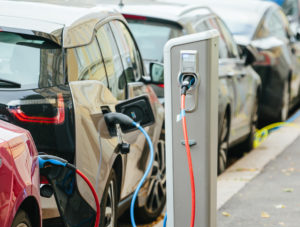Parking facility operators often worry about availability in their garages or lots, and the of electric cars, which require special charging stations at parking spots, has added another layer of complexity to the already-complex management process.
Though this problem may seem oddly specific, its presence is growing: at the end of last year, more than half a million electric cars were sold in the U.S. This figure set a record, leading experts to conclude that the popularity of electric cars will only grow as time goes on.
With that growth comes an entirely new ancillary industry: electric car charging, typically in the form of retrofitted parking spots equipped with electric car chargers. While a great marketing feature and selling point for drivers of electric or hybrid cars, it reduces the number of spots available to gasoline-powered cars. In some cases, these spots are already off-limits — in fact, in Philadelphia, parking a non-electric vehicle in a spot designated for an electric vehicle comes with a $300 fine.
As electric cars become more of a force in daily life, many parking facilities will inevitably have to consider their needs. Curbside parking and publicly-owned lots will likely be the first to require a serious discussion of this rising issue. Certainly, charging stations are a valuable service, but will the hassle and cost of installing charging stations pay off for parking facility managers?
Challenges to electric car charging installation
Facilities might first look at the difficulty of installing electric charging stations, or rather, the simplicity of doing so. Wiring one parking spot to accommodate an electric vehicle is a fairly familiar and quick process; the required equipment also happens to be affordable, though the fees that electricians charge for installation can vary. However, existing garages do need to consider the electric load of the facility –wiring to support the amount of electricity needed may prove to be a complicated process depending on what the garage can support.
Oftentimes, garages, lots and even street parking layouts put a lot of thought into placement beyond their own installation convenience. Institutions such as the University of Ottawa’s Brooks Garage places their electric car stations near entrances and stairways. As with other organizations that encourage green transportation, the university placed its charging stations near entrances. This sends a subtle thumbs-up to electric drivers and lessens their driving distances; it also supports the growing, but changing, reality that electric cars cannot yet drive the same lengths as traditional, gasoline-powered vehicles.
Once location is determined, facility managers need to establish how many spots they’re willing to dedicate to electric cars. Allot too many, and non-electric drivers will feel isolated and frustrated, unable to park their cars in the parking garage or lot. Allot too few, and a facility can risk losing business to a competitor which supplies enough charging stations. Places like New York City have already set laws establishing facilities’ minimum electric parking requirements; elsewhere, the decision is entirely in the facility owner’s hands. This question may be the most difficult of all for facility managers to answer, but no matter the number, smart parking systems are equipped to handle the balance.
Balancing the future with the present
Parking management systems can help facility operators track and balance “regular” spots with charging stations. Parking management systems, via LED indicators and level guidance systems, both inform drivers how many spots are available and guide them directly to these spots. Two separate space indicator signs could be installed, one indicating the number of free charging stations and one indicating the number of regular spots.
With the cost of electric cars projected to rapidly decline over the next decade, preparing a facility for potential shifts in traditional parking availability becomes a pressing matter. Parking management systems have successfully addressed problems that have informed the past century of parking; it turns out they can ease the difficulties of the future, too.

